How to Dye a Synthetic Wig: Step-by-Step Guide to Have Vibrant Results
- Bundles 24K
- Last updated February 7, 2025
Customizing synthetic wigs has become a hot trend for anyone looking to express their style without breaking the bank. But figuring out how to dye a synthetic wig can feel tricky if you don’t know where to start. Don’t worry—this guide will take you step by step through the process, answer burning questions like “Can you dye synthetic wig” or “How to dye a synthetic wig a lighter color,” and give you the confidence to rock your dream look. Find out with 24K Bundles right in the article below.
Why Dyeing a Synthetic Wig Is Different
Dyeing synthetic wigs requires a different approach compared to natural hair, mainly because of the materials used. Synthetic wigs are made from plastic-like fibers, such as acrylic, polyester, or PVC, which don’t absorb dye the same way human hair does. Instead of penetrating the strands, the dye coats the surface. Make the process trickier and require specific products.
If you’ve ever thought, “Can you dye a synthetic wig with regular hair dye?” the answer is no. Regular hair dyes rely on natural keratin to bond with the color molecules, something synthetic fibers completely lack. Using the wrong dye can damage the wig or produce uneven results, leaving it looking blotchy or dull.
When working with synthetic wigs, you’ll need fabric dye or synthetic wig dye made to adhere to plastic-based fibers. These dyes allow for a smoother, more even finish. Fabric dye designed for synthetic materials works best for adding vibrant or darker shades, but keep in mind that you can’t lighten synthetic hair. This limitation means you should choose a wig color that’s already close to your desired shade or slightly lighter if you plan to darken it.

What You Need to Dye Synthetic Wig Fibers
Before diving into how to dye a synthetic wig, gather these essentials:
- Fabric dye (designed for synthetic materials)
- A spray bottle or bucket
- Gloves to protect your hands
- A heat-resistant surface for drying
- An old towel
With these tools, you’ll be ready to tackle the process.
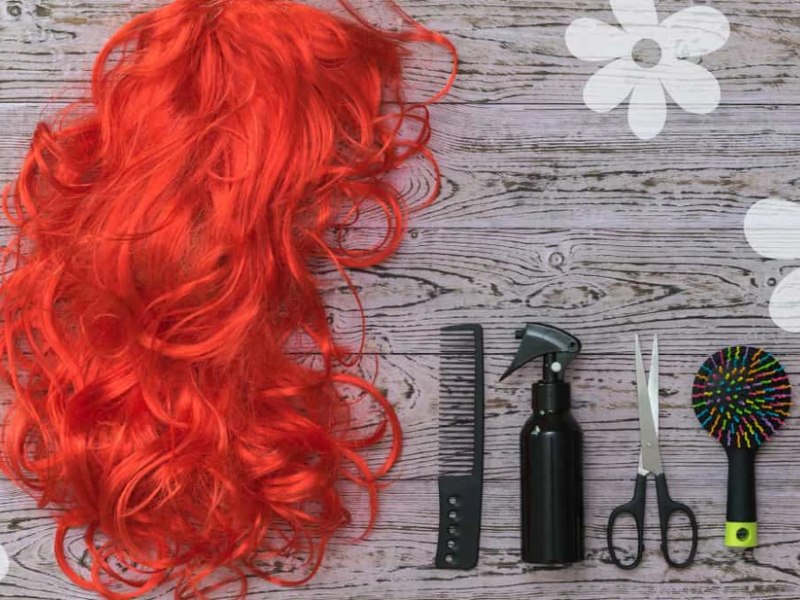
Step-by-Step: How to Dye a Synthetic Wig
For the question “Can I dye a synthetic hair wigs?” the answer is YES. Dyeing a synthetic wig might sound intimidating, but it’s easier than you think when you know the right steps. Ready to give your wig a fresh, customized look? Let’s dive in!
Prep the Wig
Start by cleaning the wig thoroughly. Dust, oils, or styling products can interfere with the dye sticking to the fibers. Use a gentle shampoo, preferably one made for synthetic wigs, and wash it under lukewarm water. Rinse it well to remove all residue. After washing, lay the wig flat on a towel and let it air dry. Avoid using heat to speed up the process, as it can ruin the fibers. Prepping the wig properly helps you get even, vibrant results when you apply the dye.

Choose Your Dye
Can you dye a synthetic wig with food coloring? The answer is no. Even the regular hair dye won’t work on synthetic wigs. Always pick a dye made for synthetic materials, like fabric dye designed for polyester or acrylic. This type of dye bonds with the plastic fibers, giving you consistent and long-lasting color. If you’ve thought about using food coloring or box dye, skip them—they won’t stick and can damage the wig. Decide on your shade carefully, as you can only darken synthetic wigs, not lighten them.

Mix the Dye
Prepare the dye according to the instructions on the packaging. Most synthetic wig dyes require hot water to dissolve properly. Use a large bucket or a spray bottle, depending on your application method. Mix the dye evenly to avoid any patchy coloring. If you’re using multiple shades, mix each color separately and apply them carefully to maintain precision.
Apply the Dye
For bucket dyeing, dip the wig completely and gently stir it around for even coverage. Work quickly but carefully, and make sure to check the fibers as you go. For spray application, divide the wig into sections. Spray the dye evenly on each part, then comb through the fibers to distribute the color. Always wear gloves to protect your hands and keep the process mess-free.
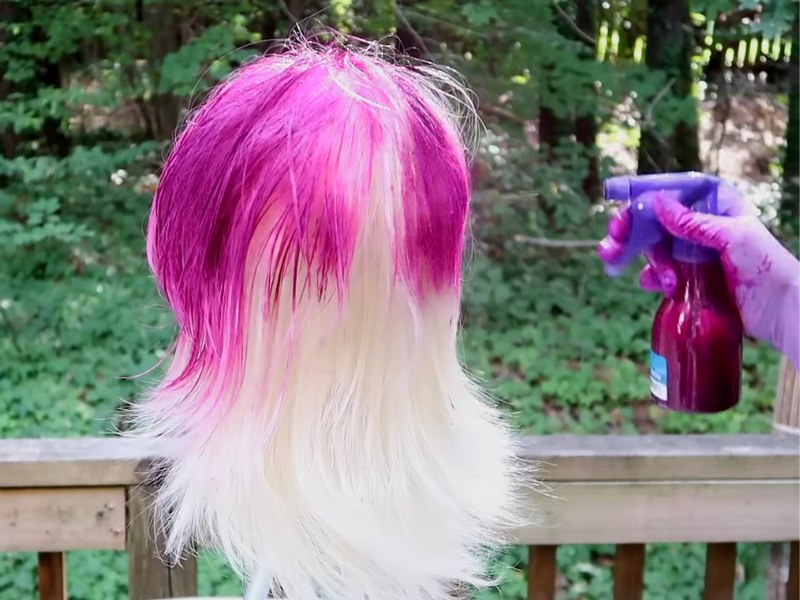
Set the Color
Rinse the wig with cold water once the desired color develops. Cold water helps seal the color onto the synthetic fibers and removes any excess dye. Keep rinsing until the water runs clear. Don’t rub the fibers harshly while rinsing, as this can create tangles or disrupt the shape of the wig.
Let It Dry
Place the dyed wig on a wig stand or mannequin head to air dry. Let it dry completely before handling it again. Avoid using a blow dryer or placing it under direct sunlight, as excessive heat can cause the fibers to shrink or warp. Don’t rush this step to avoid ruining the shape or texture.

What to Be Careful About When Dyeing Synthetic Hair
Dyeing synthetic hair isn’t as straightforward as coloring natural hair, so you’ll need to tread carefully to avoid ruining your wig. Here’s what you should keep in mind when learning how to dye a synthetic wig:
Avoid Using Regular Hair Dye
Synthetic fibers don’t absorb hair dye, which is meant for natural hair. Using traditional dye will lead to uneven color, staining, or even damaging the fibers. Stick to fabric dye or synthetic wig dye designed for polyester-like materials.
Don’t Apply Heat Unnecessarily
Most synthetic wigs can’t handle high temperatures. Using hot water or heat tools like hair dryers or straighteners could melt or warp the fibers. Always check if your wig is heat-resistant before considering heat-based methods.
Test the Dye on a Small Section
Before committing to the full wig, test the dye on a hidden strand. This ensures the color applies evenly and avoids surprises if the shade turns out differently than expected.
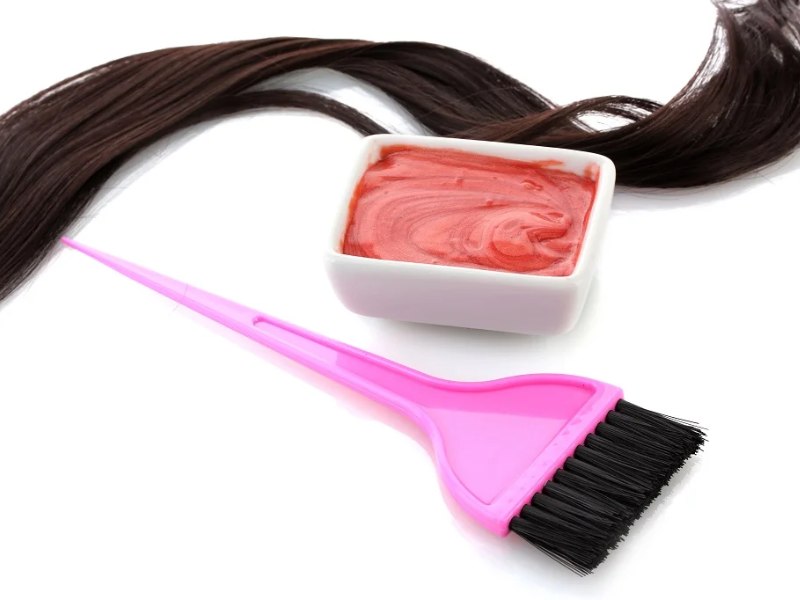
Keep It Darker, Not Lighter
If you’re wondering “how to dye a synthetic wig a lighter color“, here’s the truth—it’s nearly impossible. You can’t bleach synthetic fibers, so focus on going darker or adding vibrant tones.
Work in a Well-Ventilated Space
Fabric dyes and sprays can release strong fumes. Always dye your wig in a space with good ventilation to protect yourself from inhaling harmful chemicals.
Protect Your Skin and Surroundings
Wear gloves to avoid dye stains on your hands, and cover surfaces with old towels or newspapers to prevent a mess. Synthetic dyes can stain quickly and are tough to clean off once they are set.
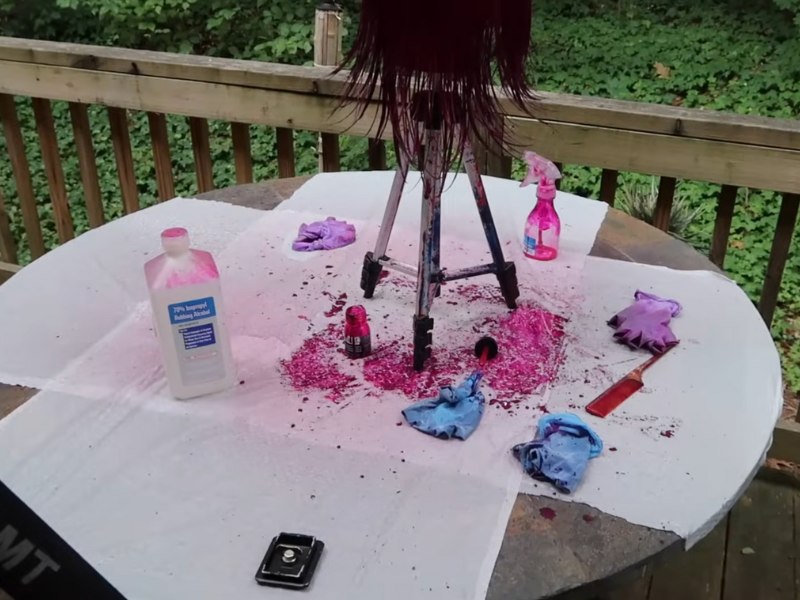
Avoid Overhandling the Wig
Synthetic fibers can tangle easily, especially when wet. Handle the wig gently throughout the dyeing process to maintain its texture and shape.
Don’t Rush the Drying Process
Let the wig air dry completely after rinsing. Using a hairdryer or placing it under direct sunlight could weaken or deform the fibers. Patience here pays off!
By following these precautions, you’ll save yourself from common mishaps and achieve a stunning look without compromising your synthetic wig.
Common Questions About Dying Synthetic Wigs
Can you dye a synthetic wig at home?
Absolutely! As long as you use the right materials and follow the steps for how to dye a synthetic wig, it’s a straightforward DIY project.
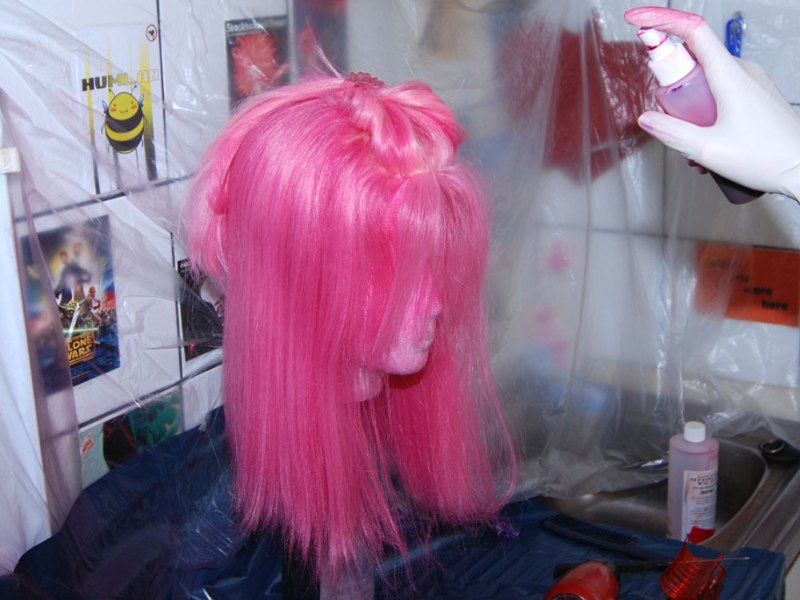
What if the wig gets damaged?
If your wig tangles or melts, it might be due to applying heat or using the wrong dye. Always follow care instructions specific to your wig type.
Final Thoughts: How to Dye Synthetic Wig Fibers Successfully
Learning how to dye a synthetic wig can be a fun and rewarding process, allowing you to customize your look without the need for permanent changes. By following this step-by-step guide, you can achieve vibrant, lasting color with the right techniques and materials. Always remember to handle your synthetic wig with care throughout the process to maintain its quality and texture. With patience and the proper steps, you can transform your wig into a stunning accessory that complements your unique style.

If you’re interested in high-quality human hair extensions, check out 24K Bundles, a trusted Vietnamese hair factory offering a wide range of products. For personalized advice, feel free to reach out via WhatsApp at +1 (213) 916-6556 !
Explore Many Other Topics